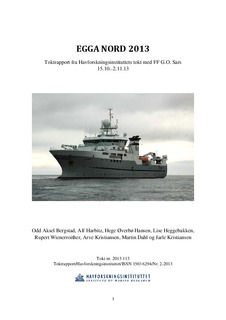| dc.description.abstract | Since 1994 a depth stratified annual bottom trawl survey was conducted along the continental
slope (68-80°N, 400-1500 m) using chartered factory trawlers. The main focus since the start
of the series was to describe the adult population of the Greenland halibut (Reinhardtius
hippoglossoides) stock in this area. Recently the survey also targeted deepwater by-catch
species. In 2011 the Institute of Marine Research developed a long-term survey strategy for
deep-sea fish surveys in which the previous trawl survey series was maintained, but renamed
EGGA NORD and continued on a biannual frequency starting in 2011. Since the precision of
the abundance and biomass estimates were expected to be low even after a substantial
reduction in sampling effort (CV expected to be c. 15%), the strategy recommended a 50%
reduction in number of stations.
In 2013, 103 pre-selected sampling sites on the shelf-break and upper continental slope were
allocated (20 min standard tows at 3 knots), and 100 actually trawled successfully. In
addition, 18 sites were selected in the adjacent Bear Isle Channel of the SW Barents Sea. Due
to technical problems with deck machinery the cruise was interrupted prematurely and only
12 of these sites were trawled.
Preliminary results from the 2013 survey show a biomass estimate for Greenland halibut close
to the average for previous years. Length distributions of Greenland halibut were similar to
that in 2011. Only minor catches of Greenland halibut occurred in the Bear Isle Channel
where Sebastes mentella was the dominant species. | nb_NO |
